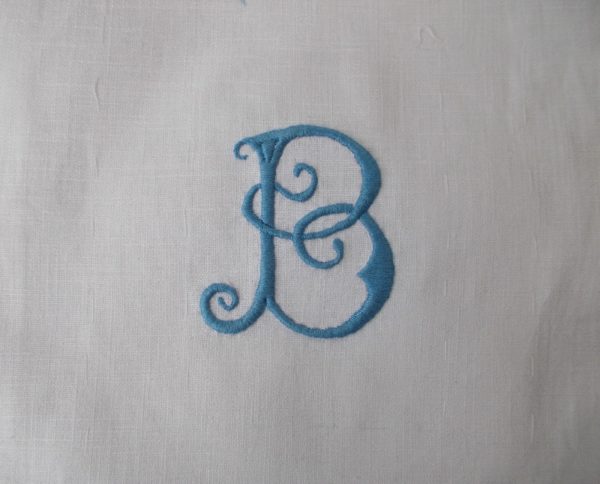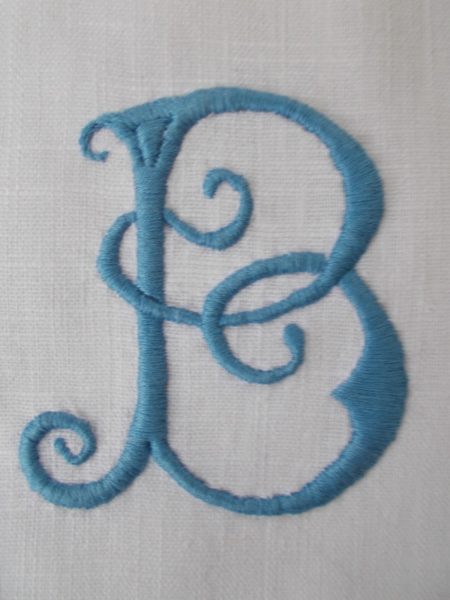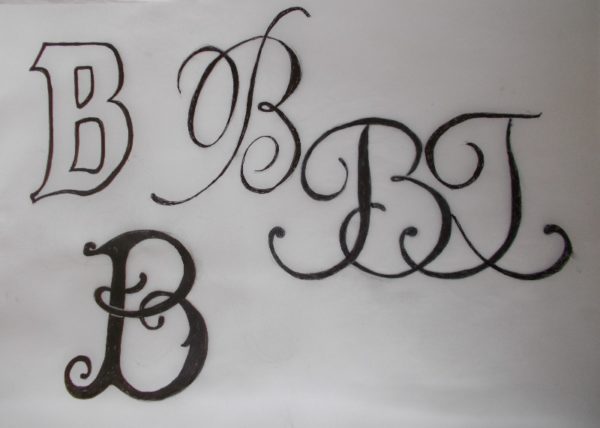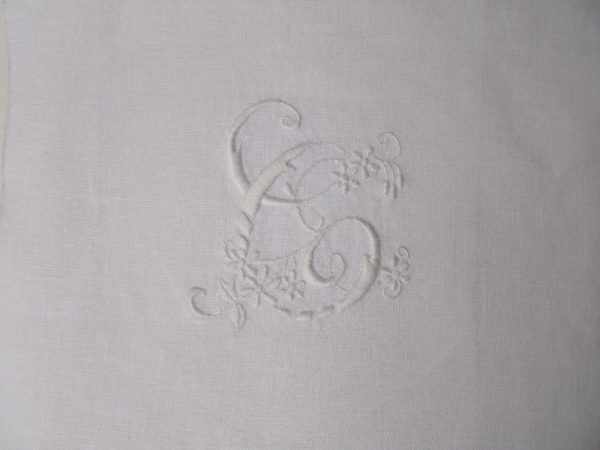
Embroidered letter C (hand embroidered by Mary Addison)
A touch of whitework this week for the letter C. The arms of the letter are padded out with stem stitch and chain stitch, though I wish I’d used felt to give the padded areas a bit more thickness – that’s what comes of being too lazy to get out of my chair and rustle through a drawer for the felt!
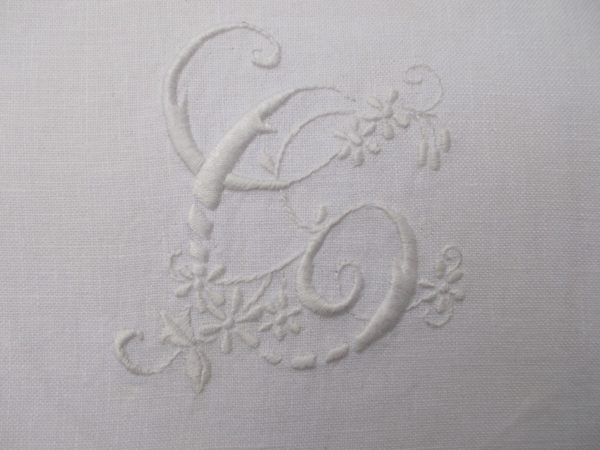
Embroidered letter C (hand embroidered by Mary Addison)
This week, C is for cataract too as my husband had his first removed on Tuesday. It’s early days as yet and his vision is still a bit blurred but the return of colour to his life has amazed him – especially as he hadn’t realised it had ever left him. Why is it only now that I learn he could no longer tell the blue breakfast bowl from the green one!
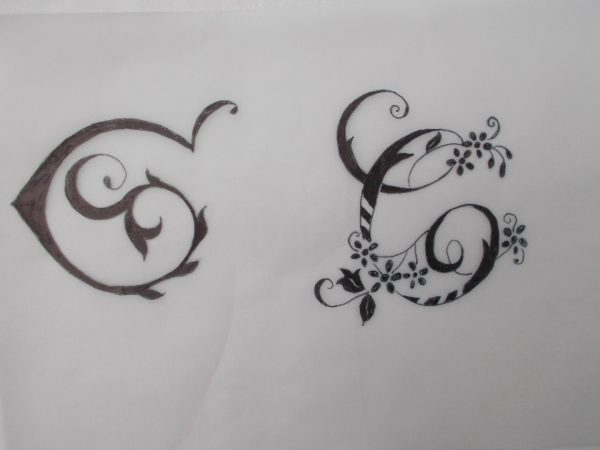
Various letter Cs – sketched from online examples
I was going to shoe horn into this post Christopher de Hamel’s glorious book, “Meetings with Remarkable Manuscripts” on the slender basis that his name begins with C but I decided it was far too good for shoe horning and that I would devote an entire post to it soon. I’ll leave you with a snippet to whet your appetite. As the Librarian of Corpus Christi College, Cambridge de Hamel has in his care the late C6th Gospels of Saint Augustine, a single volume which is traditionally used during the consecration of Archbishop’s of Canterbury. Probably the oldest non archaeological artefact of any kind to have survived in England, for centuries it was in Canterbury until being added to the Corpus Christi Library in the C16th. Among the many illustrations there is a little scene showing the Last Supper with the apostles sitting around a curved table on which the vessels are shown as if from above; these elements also appear in a scene of Bishop Odo and his nobles feasting on the Bayeux Tapestry. This suggests the former was known to the designer of the latter … possibility because that the Bayeux Tapestry was made actually in Canterbury.
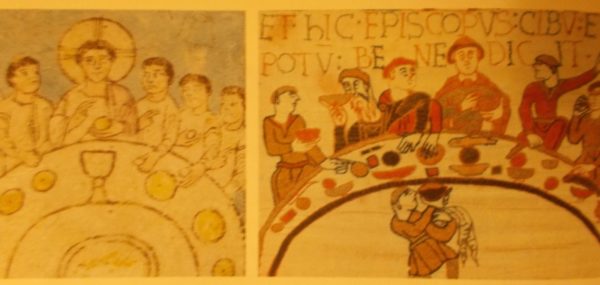
Left: Last Supper in the Gospels of Saint Augustine.
Right: Scene from Bayeux Tapestry of Bishop Odo of Bayeux feasting from his nobles (from Christopher de Hamel’s book Meetings with Remarkable Manuscripts (Allen Lane, 2016)
Sarah Bower’s The Needle in the Blood (2007) is a fictional account of the tapestry’s English origin in a Canterbury workshop. A good and informative, read it would be an even better book without the Mills and Boon romance between one of the embroiderers and Bishop Odo (William the Conqueror’s half brother). It is, however, well written and full of imaginative suggestions as to how to read the tapestry.
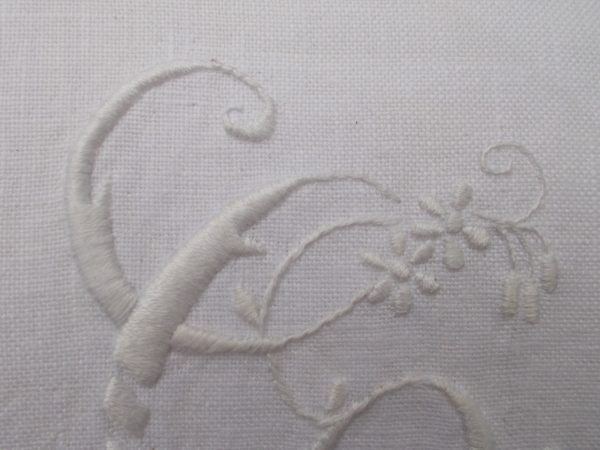
Detail of Embroidered letter C (hand embroidered by Mary Addison)

